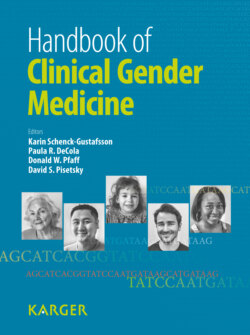Читать книгу Handbook of Clinical Gender Medicine - Группа авторов - Страница 37
На сайте Литреса книга снята с продажи.
Footnotes:
Оглавление1 Johannson and Nygren [6], for example, concluded that much of the contemporary ‘missing girl’ puzzle in China could be explained by hidden daughters, while also pointing to the likelihood of some sex-selective infanticide.
2 Chinese authorities conducted a national population census for November 2010, but the detailed results from that count are not yet available, and the initial communiqué on that census does not mention the country’s SRB [7].
3 Although China’s population program is known as the ‘One Child Policy’, it does in practice permit the birth of some second, third, and even higher-order babies: for the country as a whole, the total fertility rate (or number of births per woman per lifetime) is estimated by the UNPD as 1.64 for the 2005-2010 period, and by the US Census Bureau International Data Base at 1.54 for the year 2010 [12, 13].
4 According to Vietnam’s Ministry of Health, annual ultrasound tests nationwide rose more than tenfold between 1997 and 2007, i.e. from 1 million to 10.8 million; these data refer to medical imaging for all purposes, not only obstetrics [28].
5 Calculated using ProFamy software [37] as described in Yi, et al. [38].
6 For an overview and evaluation of the growing literature on the relationship between marriage and health, see Wood et al. [39].
7 For a decidedly ‘pessimistic’ but studied assessment of these prospects, see Hudson and den Boer [42].
8 For example: Macro International, a USAID contractor, archives over 200 DHS surveys for 75 countries - but only 7 of these for 4 countries (India 1992/1993, 1998/1999, 2005/2006; Jordan 2002; Pakistan 1990/1991, and Yemen 1991/1992, 1997) contain specific questions on parental sex preference for the next birth. The DHS surveys in question are available electronically at Measure DHS [43].
